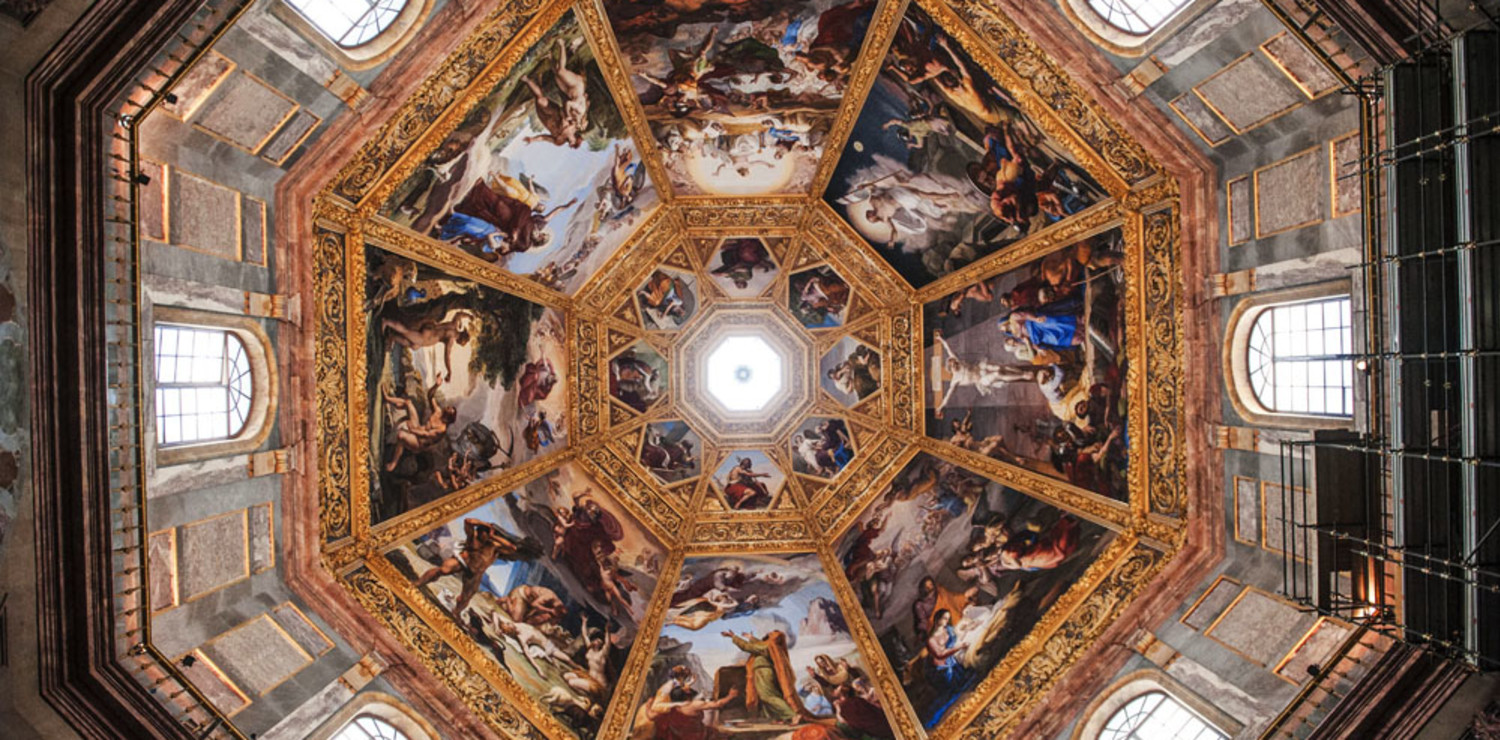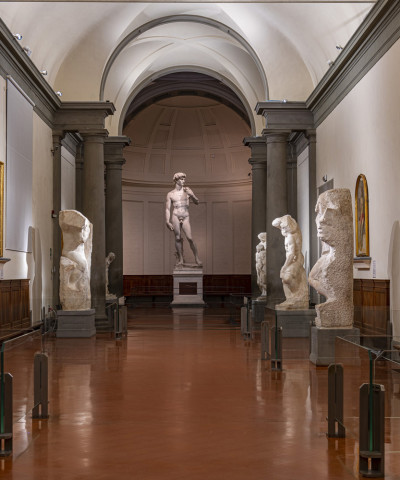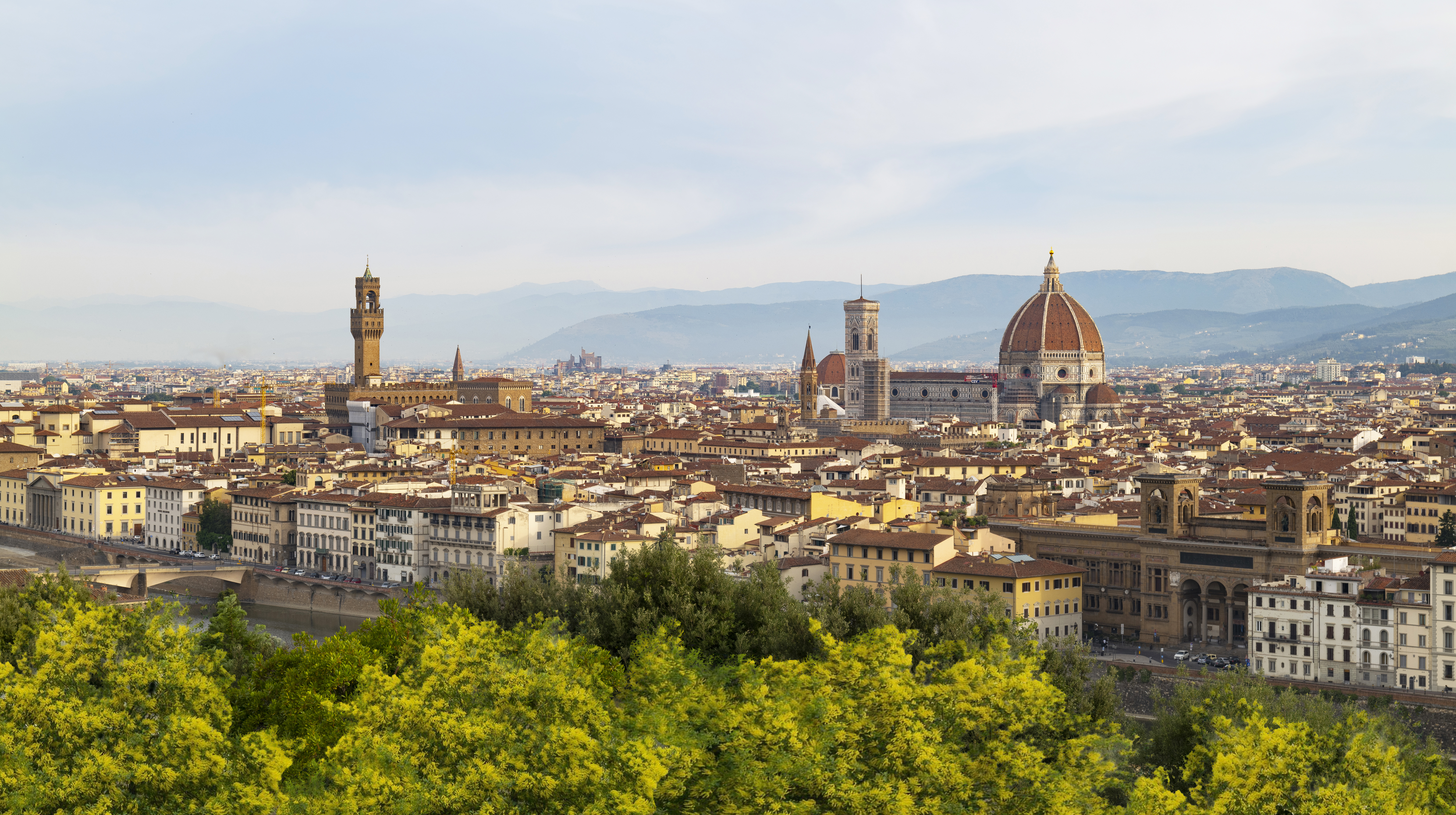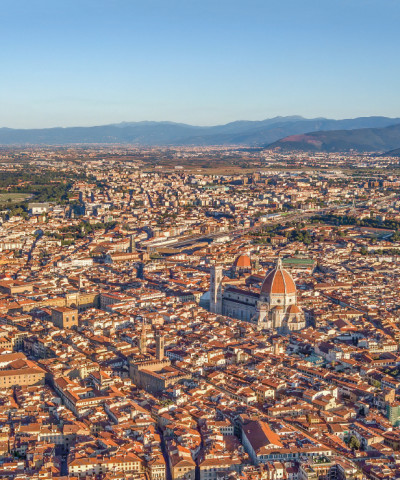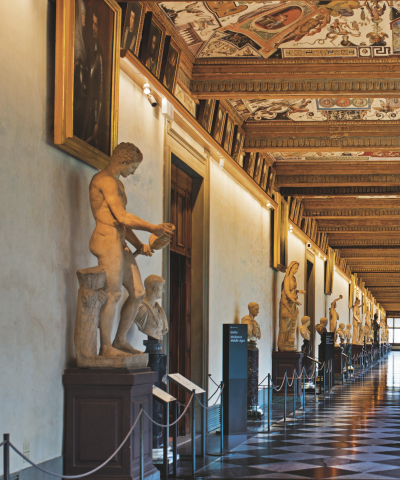The Medici Chapels of Florence
Everything you need to know about the Medici Mausoleum with Michelangelo's beautiful statues
Museo delle Cappelle Medicee, created in 1869, consists of the Chapel of the Princes, a mausoleum inlaid with semi-precious stones intended to house the mortal remains of the Medici princes, with a large dome designed by Ferdinando Ruggeri in the early 18th century; the treasure rooms of San Lorenzo from the New Sacristy built to the right of the transept of San Lorenzo and from which there is access to Secret Room of Michelangelo ; from the crypt where members of the family and their relatives are buried; and from the Lorraine crypt that houses the mortal remains of the Lorraine family.
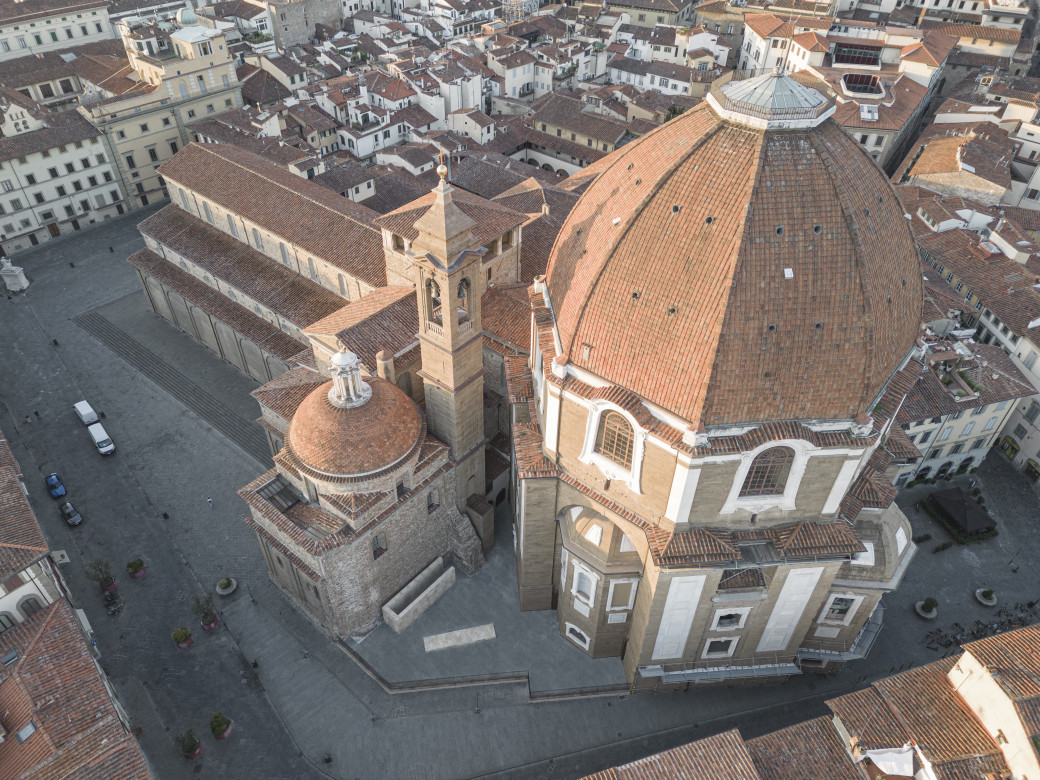 Nuova uscita del Museo delle Cappelle Medicee (ph. Stephane Giraudeau)
Nuova uscita del Museo delle Cappelle Medicee (ph. Stephane Giraudeau)Today there is one more reason to visit the Museum: a new exit, an innovative architectural solution but in harmony with the Medici Chapels complex and its long history, which not only facilitates the flow of visitors at the end of the museum tour, but also allows us to visit, after decades of closure, the Lorraine Crypt and to discover a section of the ancient and imposing medieval Florentine walls, which emerged during excavations.
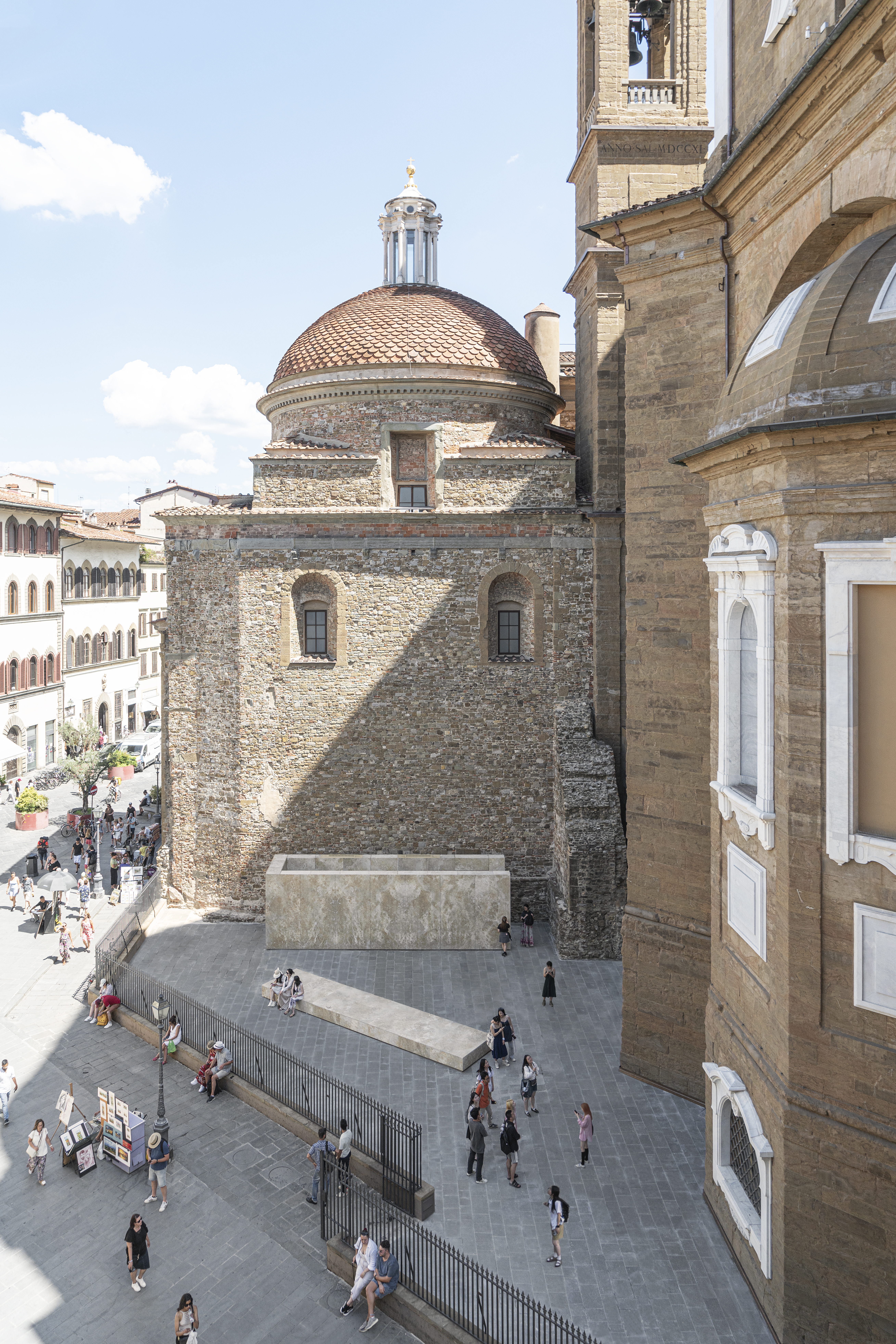 Nuova uscita del Museo delle Cappelle Medicee (ph. Stephane Giraudeau)
Nuova uscita del Museo delle Cappelle Medicee (ph. Stephane Giraudeau)The spacious new bookshop and modern facilities will take us to the square overlooking the Canto dei Nelli, crossing the stone staircase with views of the bell tower of the Basilica San Lorenzo and the domes of the New Sacristy and the Chapel of the Princes.
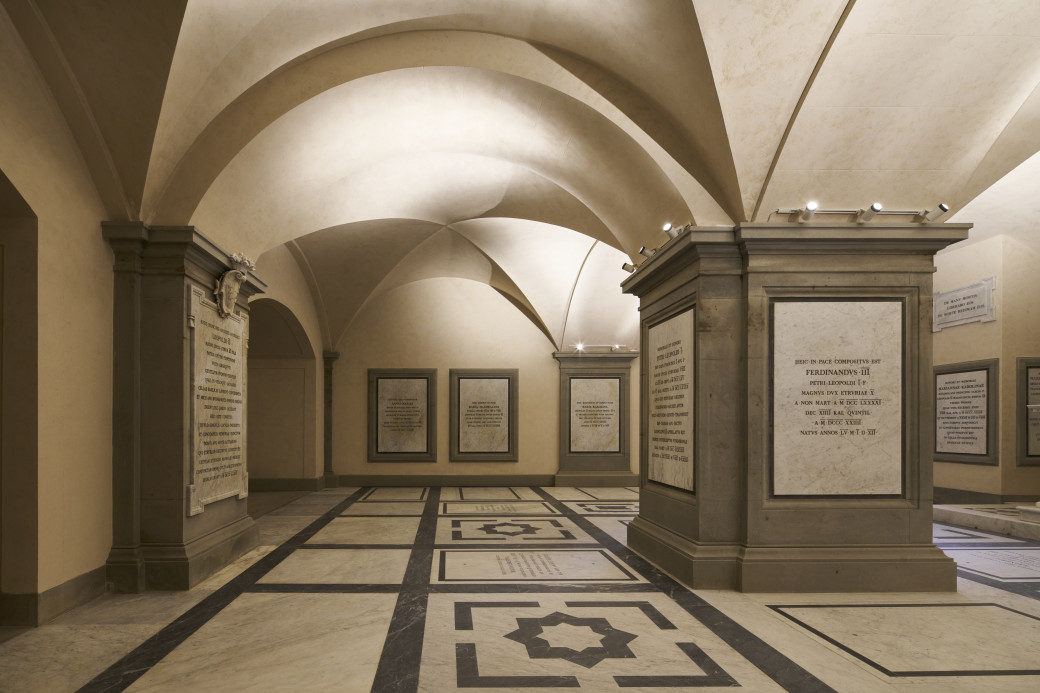 La Cripta lorenese del Museo delle Cappelle Medicee – Firenze (ph. Francesco Fanfani)
La Cripta lorenese del Museo delle Cappelle Medicee – Firenze (ph. Francesco Fanfani)A unique place of great masterpieces signed by the greatest artists in history, Michelangelo Buonarroti among them.
And just in the name of maestro Buonarroti, from the beginning of November, Michelangelo's Secret Room, which contains charcoal drawings made on the walls by the master, is also opened to the public for the first time.
The murals in the little room where it would seem that Michelangelo took refuge in 1527 to avoid possible retaliation connected to the return of the Medici to Florence, represent - if they really are genuine - a fictional story that is told through a place and its images. These are impressive graphic ideas, past and future, drawn by the artist with charcoal on the bare walls of an underground storage room. In addition to embodying the sense of evasion linked to the artistic practice and the use of imagina- tion, like primitive cave drawings or suburban street art, these drawings bear witness to man’s need, in any situation, to appropriate and leave his stamp of creativity on the surrounding environment.
To discover all of Michelangelo's other works in Florence, click here!
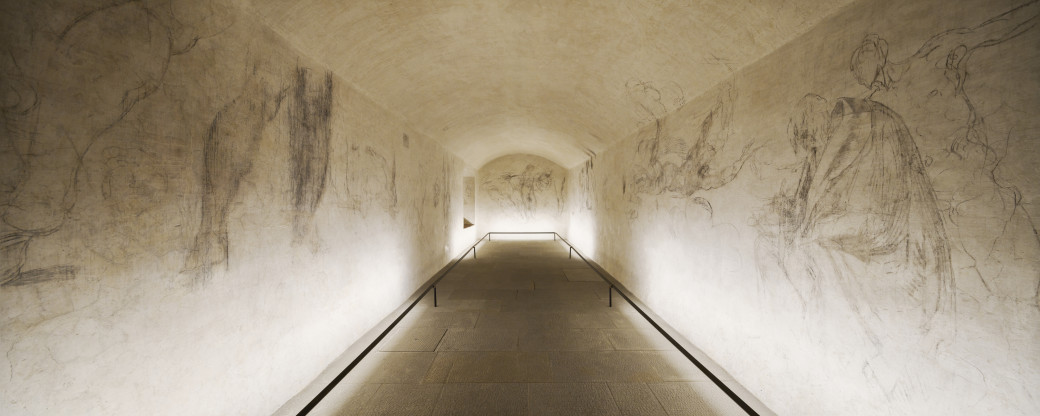 La Stanza segreta di Michelangelo – Museo delle Cappelle Medicee (ph. Francesco Fanfani)
La Stanza segreta di Michelangelo – Museo delle Cappelle Medicee (ph. Francesco Fanfani)Part of the complex, in addition to the Museum, are the Church of San Lorenzo, the Old Sacristy and the Laurentian Medici Library. Over the years it has been the subject of numerous fragmentations: today the Library is under the aegis of the Ministry of Cultural Heritage and Activities and Tourism of the Intendenza di Finanza, the Church and the basement the Library are ecclesiastical property, while the Medici Chapels Museum and the New Sacristy, with Casa Martelli, are administered by the State, that is, still by the Ministry, under the new direction of the Bargello National Museum. But thinking of them united is after all, for visitors, only a mental exercise, absolutely not prevented by its administrative fragmentation.
The history of the Medici Chapels begins with Cosimo I de' Medici, the first Grand Duke of Tuscany, who, between 1561 and '68, entrusted the task to Giorgio Vasari (1511-1574), to whom we owe the idea of marble and mosaic coverings.
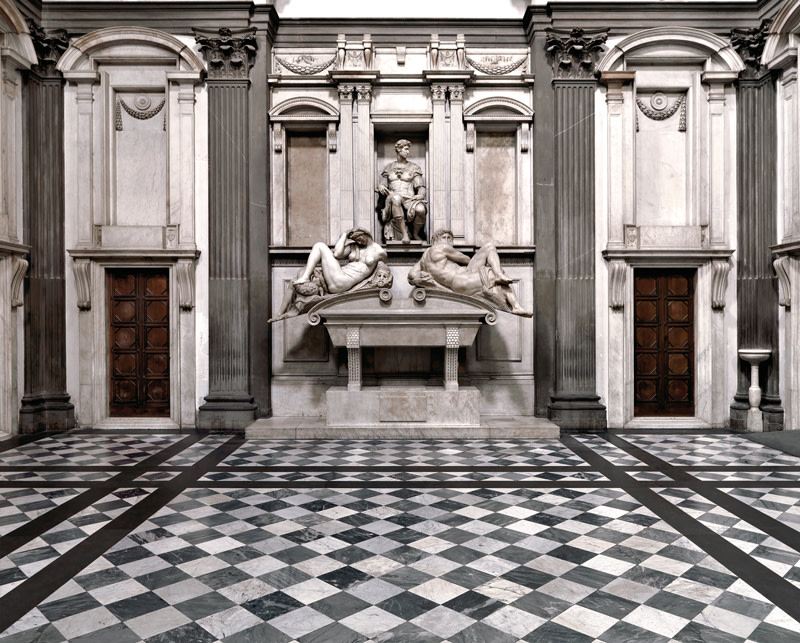 Cappelle Medicee (©ph. Massimo Listri)
Cappelle Medicee (©ph. Massimo Listri)Work, however, was begun only under the Grand Duchy of Ferdinand I, who in 1588 had founded the Florentine Opificio delle Pietre Dure for the purpose, calling numerous famous stone masters to Florence. It is accessed from the underground crypt built in 1608, consisting of an octagon covered by sturdy cross vaults resting on pillars of pietra forte, in which the rectangular chapels are set.
Here in 1791 Ferdinand III of Lorraine created the burial ground, transporting there the bodies of the Medici, previously located in both the Old Sacristy, the New Sacristy and the church's basement. In the four side chapels, in an underground crypt in front of the present entrance and next to the great pillars of the octagon are the repositories of members of the Medici family, generally grouped by family units.
The Lorraine crypt is located behind the crypt altar, under the choir of the basilica, in the middle between the Medici burial ground and the tomb of Cosimo Pater Patrie. Two strong-stone staircases lead to the octagonal Princes' Chapel, conceived as a church with a central plan that leans against the chancel and choir of the Basilica of San Lorenzo and those connected to it. Begun under Ferdinand I in 1604, it was Anna Maria Luisa, the last heir of a dynasty destined to become extinct with her, who gave the building site a decisive boost almost a century later.
During his lifetime, in fact, the dome was vaulted while the mosaic decoration originally planned was replaced by a fresco decoration created only in the Lorraine era (1828-37) by the neoclassical painter Pietro Benvenuti with four episodes taken from the stories of Genesis (the Creation of Adam and Eve, Original Sin, the Death of Abel, and the Last Flood) contrasted with as many episodes taken from the New Testament (Nativity, Crucifixion, Resurrection, and Last Judgment).
In the final ring, divided into octagons are the images of the four Evangelists (John, Luke, Mark, Matthew), and the four figures of the Forerunners (Moses, Aaron, David, and St. John the Forerunner).
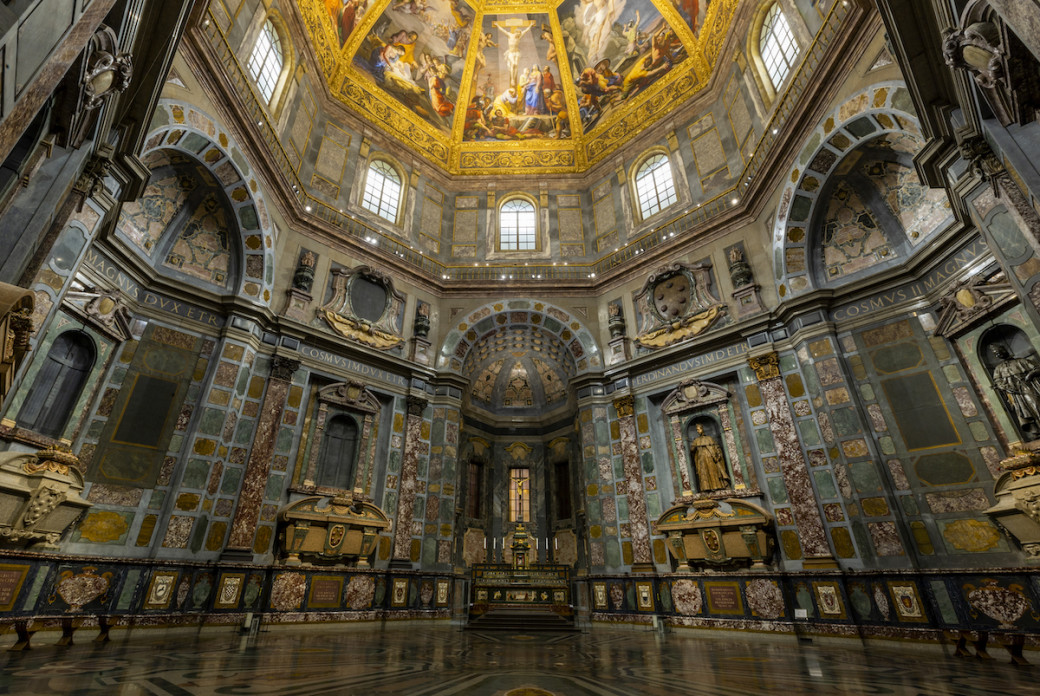 Museo delle Cappelle Medicee. Cappella dei Principi
Museo delle Cappelle Medicee. Cappella dei Principi A corridor guides us from the mausoleum to the chapel commissioned by Pope Leo X to house the remains of his relatives-his brother Giuliano, Duke of Nemeour, and his nephew Lorenzo, Duke of Urbino-father Lorenzo the Magnificent and uncle Giuliano, the New Sacristy, built péndant of Brunelleschi's , was conceived in its interior architectural and sculptural furnishings by Michelangelo perhaps on an earlier layout designed by Giuliano da Sangallo. The work lasted fourteen years, suffered numerous interruptions due to major historical events-including the flight and return of the Medici to power-and was unfinished in 1534, due to Michelangelo's final move to Rome.
It was Giorgio Vasari and Bernardo Buontalenti, commissioned by Cosimo I between 1554 and 1555, who gave the New Sacristy its current layout. An extraordinary discovery in 1975 revolves around a small dungeon just below Michelangelo's signature chapel: this is where Buonarroti apparently hid during the days of the failure of the Republic and the return of the Medici to power. The drawings on the wall, some of the highest quality, testify to the artist's stay in these places.
Our visit draws to a close, but to follow that completeness the director told us about at the outset, we passed through the church-not without turning our eyes to Filippo Lippi's recently restored Annunciation, luminous in an almost sublime way-to enter the Old Sacristy. Commissioned by Giovanni de' Medici from Filippo Brunelleschi, it has a different charm from Michelangelo's but is equally captivating. A rougher casket when compared to the marbles of the New Sacristy, it finds its acme in the apse where a depiction of the celestial hemisphere, deep and intense blue, lightens the severe recollection created by Brunelleschi and Donatello.






